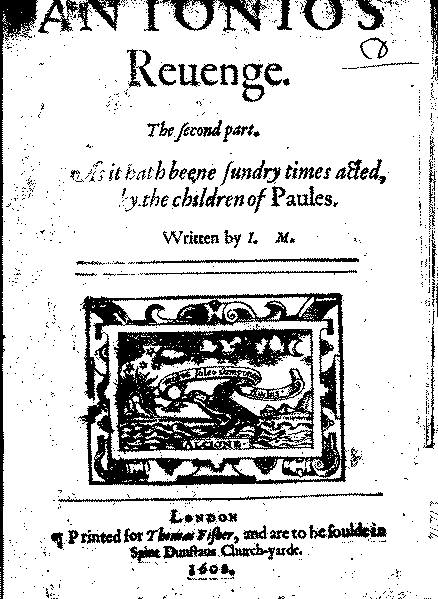|
| |
 |
|
John Marston's play, a sequel to his romantic Antonio and Mellida, was performed by a new company of boy actors, the Children of Paul's Choir, probably first in 1600 or 1601. Its relation to Hamlet, while close, has baffled scholars. Both plays featured ghosts of fathers who return to their sons with tales of their murder, suspect but repentant mothers, doting (if murdered) husbands, ghosts who call for revenge from the cellerage under the stage, and revengers who pass up their first opportunity to take their revenge. Scholars disagree about which play preceded the other; some argue that Marston and Shakespeare, working from the same Ur-Hamlet, wrote their plays at the same time and perhaps in cooperation, since they were intended for such different venues: a boys' company playing year-round in small private theaters with artificial lighting within the city but with no playhouse of their own and a men's company performing outside the city in a large, outdoor public theater only in the months with afternoon daylight enough to light the stage. But whether they wrote in competition or cooperation, the plays they produced could not have been less alike. Marton's play is a conventional Elizabethan revenge tragedy. His villain is a fiendish Renaissance Italian despot, a stage machiavel so over-the-top that he, and the play, eventually become ludicrous. In Hamlet Shakespeare had taken a creaky old melodrama and turned it into a brilliant drama of ideas. |